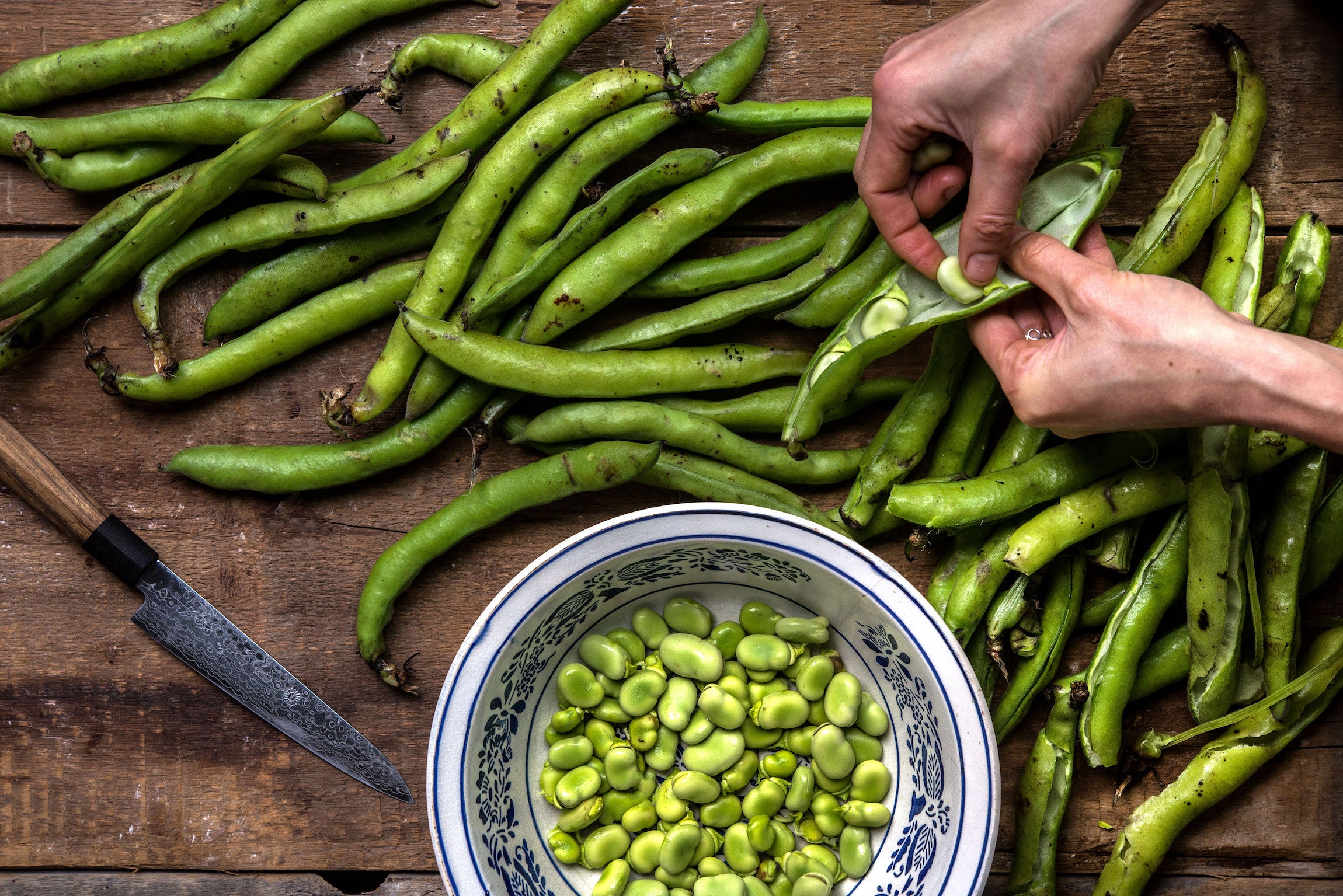
Fava beans have a bad rap for being complicated to prep, but the best ways to eat them are simply smashed with olive oil or grilled whole.
Ever since the Middle Ages, fava beans have been a symbol of good luck to Italians. As the story goes, during a massive historic drought in Sicily, all of the crops were wiped out except for the hearty fava, which was able to fend off starvation until the end of the drought. These Old World legumes are among the most ancient crops to be cultivated, dating back to at least 6000 BC. Today, fava beans are grown and eaten throughout the world, especially in the Mediterranean and the Middle East. They have a window from mid-spring to early summer, give or take a week or two depending on where you live.
At the beginning of their season, young favas have a sweet, buttery, melt-in-your-mouth quality to them. It’s the only time of year I eat fresh fava beans, as they become increasingly starchy as they mature. During the remainder of the year, you can enjoy them frozen or dried, though neither compares to young, freshly picked favas, grilled whole, blended into a bright green spread, or tossed into a salad.
If you happen to spot fresh favas, don’t pass them up. Just be sure to buy several pounds since one pound in their pods yields only about one cup of shelled beans when all is said and done. When shopping for them, look for beans that are bright green in color and free of yellow or brown patches. The smaller, more slender the bean, the sweeter and more tender it will be. If you run your fingers along the length of the pod, it should feel full.
To reach the edible part of the fava bean, you must peel it not once, but twice. If they are very young—extremely fresh and tender—you can skip the second peeling, but the skin can be a bit bitter, and I prefer that extra step to reach the bright green bean. First you peel the fava beans from their outer pod. Next drop the shelled beans into a pot of boiling water for a minute or two. Then immediately transfer to an ice water bath to stop the cooking process and preserve the vivid color. Lastly, peel the thick, light green skin around each bean. The individual bean will slide right out with a little pinch. It takes a bit of patience, but it will be worth it for a sweet burst of springy green and a bit of good luck.